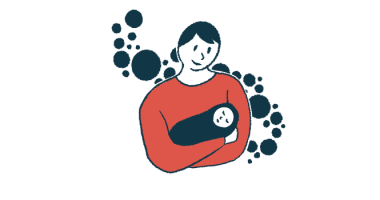Substrate reduction therapy for Pompe disease
Last updated March 14, 2025, by Andrea Lobo, PhD

Substrate reduction therapies are being developed for Pompe disease, a rare lysosomal storage disorder caused by the accumulation of a complex sugar molecule called glycogen.
Lysosomal storage disorders occur when certain enzymes inside the lysosomes — cellular compartments where molecules are degraded into smaller components that can be recycled by cells — are defective or missing, causing waste molecules to build to toxic levels inside cells.
The main goal of substrate reduction therapy is to reduce the production of the faulty enzyme’s substrate, which is the molecule to which the enzyme binds to form a product. By reducing the amount of substrate, such therapies are expected to help reduce its toxic buildup.
Although further research is needed to understand potential substrate reduction therapy benefits and risks in Pompe, the treatment has been shown to reduce glycogen levels in healthy volunteers.
Substrate reduction therapies are approved for Gaucher disease, another lysosomal storage disorder. They are Zavesca (miglustat) and Cerdelga (eliglustat).
How could substrate reduction therapy work in Pompe disease?
Pompe disease is caused by mutations in the GAA gene that result in low to no functional acid alpha-glucosidase (GAA), an enzyme that breaks glycogen down into smaller molecules used for energy production.
When the GAA enzyme is absent or does not work properly, glycogen cannot be degraded inside lysosomes, and it accumulates to toxic levels.
Glycogen is mainly stored in the liver and in muscle cells. Its accumulation can interfere with muscle function, ultimately leading to Pompe symptoms including muscle weakness and pain, poor muscle tone, fatigue, and breathing issues.
The standard treatment for Pompe is enzyme replacement therapy, which involves the administration of a lab-made, working version of the GAA enzyme. By supplying the body with a functioning enzyme, these treatments are expected to ease symptoms and slow disease progression.
Substrate reduction therapy is designed to lower glycogen levels by targeting the activity or production of glycogen synthase (GYS1), the enzyme responsible for producing glycogen in muscle cells.
Substrate reduction therapies for Pompe disease
Substrate reduction therapies for Pompe disease are still in early clinical trials. None of these treatments has been approved by regulatory authorities. More testing is needed to assess substrate reduction therapy side effects and effectiveness in easing symptoms or interfering with disease progression.
S-606001
S-606001, also known as MZE001, is an oral, small molecule intended to block the activity of GYS1. Shionogi acquired rights to the treatment in 2024 from Maze Therapeutics.
A Phase 1 trial (NCT05249621) completed in December 2022 evaluated the treatment’s safety and pharmacological properties in 121 healthy adults, randomly assigned to receive single or multiple doses of S-606001 or a placebo.
The treatment was well tolerated at single doses up to 480 mg, and at multiple doses up to 720 mg twice daily. Adverse events were mild to moderate in severity, and almost all not related to the treatment. S-606001 reduced glycogen levels in a dose-dependent way in the 10 days after dosing.
ABX1100
ABX110, being developed by Aro Biotherapeutics, aims to reduce GYS1 levels.
It contains a small interfering RNA (siRNA) designed to reduce levels of messenger RNA (mRNA) in the GYS1 gene. mRNA is an intermediary molecule used as a template for protein production. siRNA binding to GYS1 mRNA leads to its degradation, preventing the enzyme from being produced. The siRNA is bound to an engineered protein, called centyrin, that‘s been designed to improve delivery to target cells.
ABX110 is being evaluated in a Phase 1 trial (NCT06109948). In the first part, ABX110 reduced GYS1 mRNA and protein levels in the muscles of healthy volunteers for at least 10 weeks after two treatment doses four weeks apart. Given by intravenous (into-the-vein) infusions, it was well tolerated at all doses, and no serious adverse events were reported.
The treatment is being tested in the second part in adults with late-onset Pompe disease. Goals are to assess ABX110’s safety and pharmacological properties, and to determine whether it induces an immune reaction.
Pompe Disease News is strictly a news and information website about the disease. It does not provide medical advice, diagnosis, or treatment. This content is not intended to be a substitute for professional medical advice, diagnosis, or treatment. Always seek the advice of your physician or other qualified health provider with any questions you may have regarding a medical condition. Never disregard professional medical advice or delay in seeking it because of something you have read on this website.
Related articles






